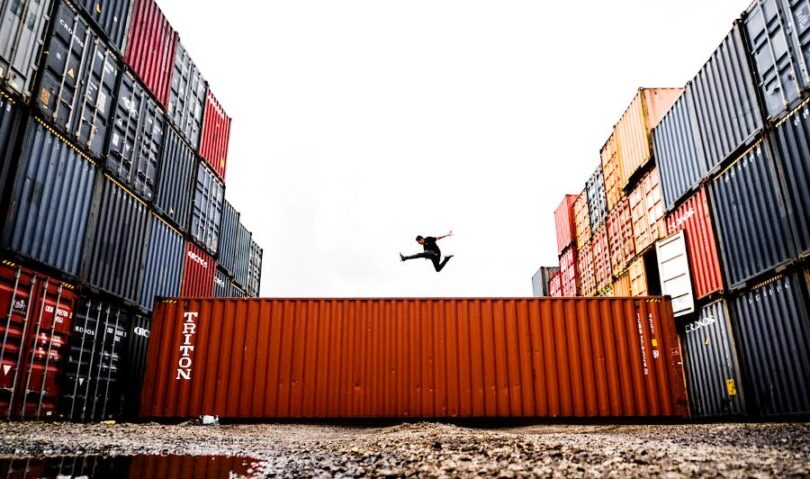When it comes to protecting valuable cargo, the importance of robust shipping container security cannot be overstated. Every year, businesses suffer significant losses due to theft and vandalism of goods stored in shipping containers. These containers, often left in accessible and remote areas, are easy targets for criminals unless properly secured. Implementing effective security measures not only prevents financial loss but also enhances the credibility of logistics operations by ensuring that goods are delivered without tampering or damage.
Types of Locking Mechanisms
Traditional Padlocks
These are a common choice for securing shipping containers due to their simplicity and cost-effectiveness. However, while they provide a basic level of security, they are often not sufficient to deter determined thieves. For better protection, choosing the best padlock for shipping containers involves selecting one that is robust, resistant to bolt cutters, and preferably made of hardened steel. These features make it harder for criminals to breach the lock quickly and quietly.
Door Locks
Shipping container door locks are designed to fit the unique build and entry points of containers. These locks are typically more robust than regular padlocks and are integrated into the door’s structure, making them less visible and less prone to tampering. Their design often includes a hidden shackle that can’t be easily accessed with bolt cutters, thus providing a higher level of security compared to traditional padlocks.
Twist Locks
Shipping container twist locks are an advanced locking mechanism that securely joins shipping containers to each other or the transport vehicle. While primarily used for stabilizing containers during transport, they also offer an added layer of security when containers are stored on-site. By locking containers together, twist locks make it significantly more difficult for thieves to isolate and access a single container, therefore safeguarding the contents across multiple containers.
Locking Pins
Shipping container locking pins offer an additional security layer by locking the container’s handles or the twist locks in place. These pins are typically controlled through a central locking mechanism, which can be a standalone system or integrated into broader shipping container security systems. Utilizing locking pins is crucial in preventing the manipulation of the container’s primary locking mechanisms.
Choosing the Best Locks
Criteria for Reliable Locks
When deciding on the best shipping container lock, several criteria must be considered to ensure both durability and reliability. These criteria are vital for safeguarding the contents against theft and environmental damage. Here’s a breakdown of what to look for:
- Material Quality: Opt for locks made from hardened steel or similar high-resistance materials.
- Weather Resistance: Ensure the lock can withstand environmental elements like rain, salt air, and extreme temperatures.
- Lock Complexity: Choose locks with advanced locking mechanisms to deter lock picking and drilling.
- Compatibility: The lock should fit well with your container’s existing hardware and door design.
- Reputable Brand: Invest in locks from well-known brands that are recognized for their quality and durability in the security industry.
These considerations will help you select a lock that not only fits your needs but also provides the highest level of security possible. By focusing on these key aspects, you can ensure that your shipping container and its contents are well-protected.
Best Practices for Installing
Proper installation is key to maximizing the effectiveness of shipping container door locks. It is advisable to follow the manufacturer’s instructions meticulously or hire a professional. Ensure that the lock is mounted correctly, with all moving parts operating smoothly and alignment precise. This prevents gaps that could be exploited to pry the lock open.
Integrated Security Systems
Benefits of Alarms
Incorporating shipping container alarm systems significantly enhances security by acting as a deterrent against potential thieves. Alarms serve as an immediate response mechanism that can alert nearby personnel or connected security services when unauthorized access is detected. This proactive approach not only helps in preventing theft but also in quickly mobilizing response teams to address the intrusion. Alarms are particularly effective in remote or less-monitored areas where physical surveillance is challenging.
Motion Detectors
These systems can be calibrated to detect unusual activity around or inside a shipping container and are especially useful after operational hours. When integrated with cameras and lights, motion detectors can trigger recording and illuminate the area, which further discourages criminal activity and helps in collecting evidence if a breach occurs.
Setup and Maintenance
Proper setup and regular maintenance are crucial for the effectiveness of electronic security features. Here’s how to ensure your electronic security setup is always at peak performance:
- Professional Installation: Have your electronic security systems installed by certified professionals who can optimize placement and configuration for maximum coverage and efficiency.
- Regular Updates: Keep your system’s software and firmware up to date to protect against the latest threats and ensure compatibility with all hardware components.
- Frequent Testing: Regularly test the system to ensure all components are working correctly, from sensors to alarms to communication links.
- Battery Checks: For battery-operated components, check and replace batteries as needed to avoid failures during critical times.
- Environmental Adjustments: Adapt the settings of motion detectors and cameras to account for environmental changes that could lead to false alarms, such as windy conditions or nearby wildlife activity.
These steps will help maintain the integrity and reliability of your security system, ensuring that it remains effective against potential threats and provides the necessary protection for your valuable assets. Regular audits by security professionals can further enhance system functionality and adaptation to new challenges.
Importance of Container Positioning
Placing them in well-lit, visible areas can significantly deter potential thieves who prefer operating in shadows to avoid detection. Moreover, containers should be positioned to obstruct easy access to their doors and locking mechanisms. For instance, orienting the container door against a wall or another container can prevent the door from being forcibly opened easily. Strategic placement not only physically secures the container but also leverages existing environmental factors to enhance security.
Regular Maintenance Checks
Schedule and Checklist
This schedule should include detailed checks of physical locks, inspection of alarm systems, and assessment of the structural condition of the container itself. Ensuring that these checks are done systematically not only maintains the security level but also extends the lifespan of the security installations and the container. Adherence to a maintenance checklist can streamline the process, making sure no critical elements are overlooked and all standards are met.
Professional Security Assessments
Security professionals can offer expert insights into potential risks and suggest improvements based on the latest security trends and technologies. These assessments are particularly beneficial in validating the overall effectiveness of the existing security setup and in adapting to new security challenges. Professional evaluations help ensure that the shipping container locking system remains robust against evolving threats and is compliant with industry best practices.
To maintain the integrity of shipping container security, businesses must adopt a proactive and layered approach. Selecting the best way to secure a shipping container involves combining high-quality locks, strategic container placement, and cutting-edge alarm systems. Regular reviews and updates of security strategies, in line with the latest technological advancements and regulatory requirements, will also help in addressing new challenges as they arise. By following these guidelines, businesses can significantly reduce the risk of theft and vandalism, ensuring that their goods are transported and stored securely.
Photo by Kaique Rocha.








